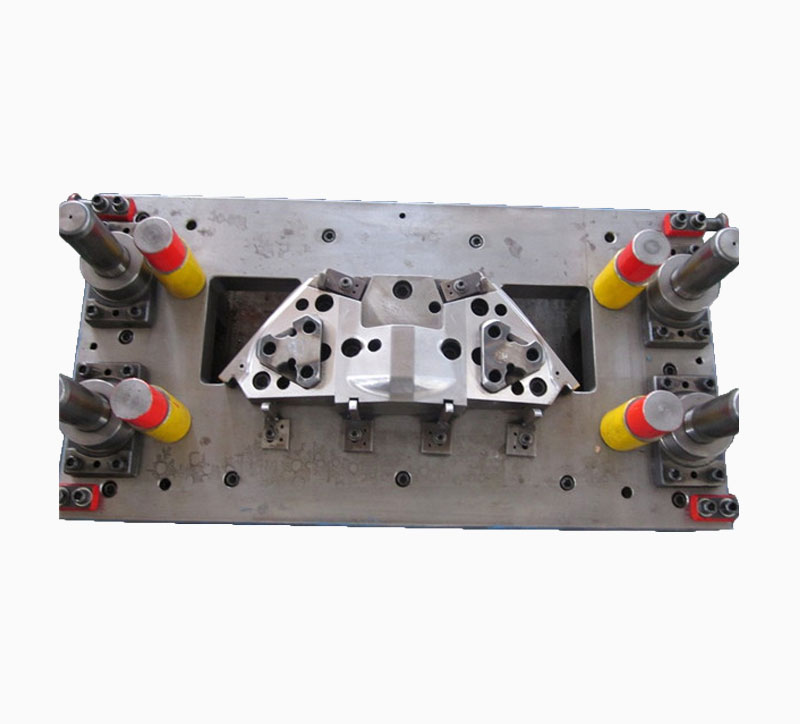In the production of die casting, the mold often encoun […]
In the production of die casting, the mold often encounters the defense methods of the gating system, the overflow system, the runner, the inner gate, and the overflow groove.
1. Pouring system, overflow system
a. The diameter of the pressure chamber should be selected according to the required specific pressure and the degree of fullness of the pressure chamber. At the same time, the inner diameter deviation of the sprue sleeve should be appropriately enlarged by a few more than the deviation of the pressure chamber diameter, so as to avoid the difference between the gate sleeve Diameters in the pressure chamber are different from the axis, causing the punch to jam or wear serious problems, and the wall thickness of the sprue sleeve should not be too thin. The length of the sprue sleeve should generally be less than the ejection lead of the injection punch, so that the paint can escape from the pressure chamber.
b. The inner hole of the pressure chamber and the sprue sleeve should be finely ground after heat treatment, and then ground along the axial direction. The surface roughness is less than or equal to Ra0.2μm.
c. The diverter and the cavity forming the paint have a recessed depth equal to the depth of the runner, and its diameter matches the inner diameter of the sprue sleeve, with a 5° slope along the demolding direction. When the coating-introduction sprue is adopted, the fullness of the pressure chamber can be increased because the effective length of the pressure chamber is shortened.

2. Requirements for the mold runner
a. The entrance of the runner of cold horizontal mold should generally be located at the position above 2/3 of the inner diameter of the upper part of the pressure chamber, so as to prevent the molten metal in the pressure chamber from entering the runner prematurely under the action of gravity and starting to solidify early.
b. The cross-sectional area of the runner should gradually decrease from the sprue to the inner gate. In order to increase the cross-section, negative pressure will appear when the molten metal flows through, which can easily inhale the gas on the parting surface and increase the molten metal. The flowing vortex envelops the air. Generally, the cross section at the exit is 10-30% smaller than that at the entrance.
c. The runner should have a certain length and depth. The purpose of maintaining a certain length is to stabilize the flow and guide. If the depth is not enough, the molten metal will cool down quickly, and if the depth is too deep, the condensation will be too slow, which will affect productivity and increase the amount of recharge material.
d. The cross-sectional area of the runner should be greater than the cross-sectional area of the inner gate to ensure the speed of the molten metal. The cross-sectional area of the main runner should be larger than the cross-sectional area of each branch runner.
e. The two sides of the bottom of the runner should be rounded to avoid early cracks. The two sides can be inclined at about 5°. The surface roughness of the runner part is less than or equal to Ra0.4μm.
3. Inner gate
a. The parting surface should not be closed immediately after the molten metal enters the mold, and the overflow groove and exhaust groove should not impact the core directly. After the molten metal is poured into the mold, the flow direction should follow the cast ribs and fins as much as possible, and fill from the thick wall to the thin wall.
b. When choosing the position of the inner gate, make the molten metal flow as short as possible. When multiple internal gates are used, it is necessary to prevent several molten metals from converging and impacting each other after entering the mold, resulting in defects such as vortex entrapment and oxidation inclusions.
c. The thickness of the inner gate of the thin-walled parts should be appropriately smaller to ensure the necessary filling speed. The setting of the inner gate should be easy to cut, and the casting body should not be damaged (eating meat).
4. Overflow tank
a. The overflow groove should be easy to remove from the casting, and try not to damage the casting body.
b. When opening the exhaust slot on the overflow slot, pay attention to the position of the overflow port to avoid blocking the exhaust slot prematurely and making the exhaust slot inoperative.
3. Several overflow ports or a very wide and thick overflow port should not be opened on the same overflow tank, so as to prevent the cold liquid, slag, gas, paint, etc. in the molten metal from returning from the overflow tank. Cavity, resulting in casting defects.
Please Leave Your Email Or Phone Number,So We Can Contact You As Soon As Possible
Contact us
Taizhou Booling Mould Co., Ltd. is a famous China Plastic Moulds Manufacturers and Extrusion Blow Moulding factory,we produces and deals with various injection mould,extrustion blow moulds and plastic mould machinery,etc.



 Languages
Languages